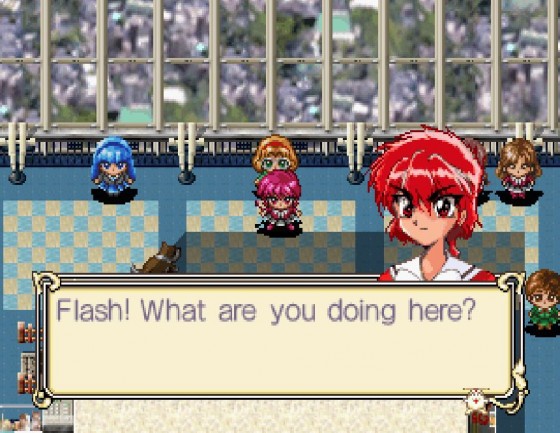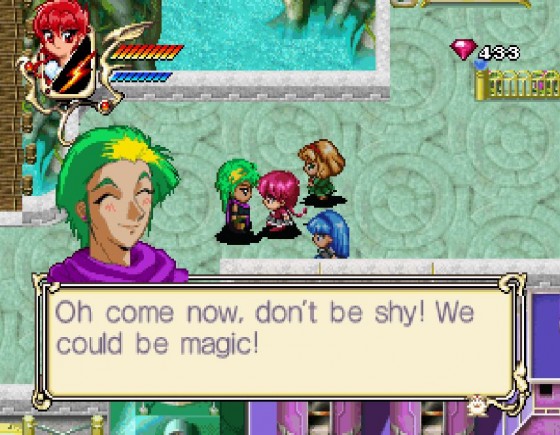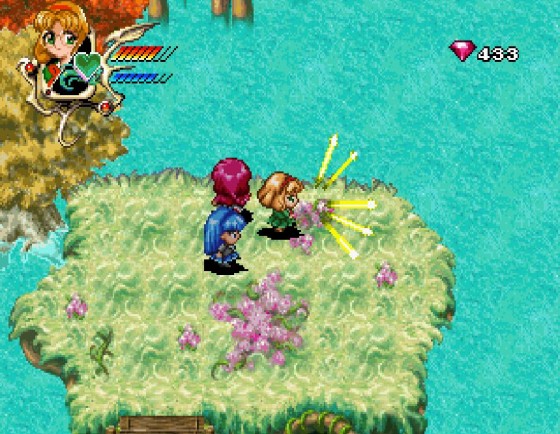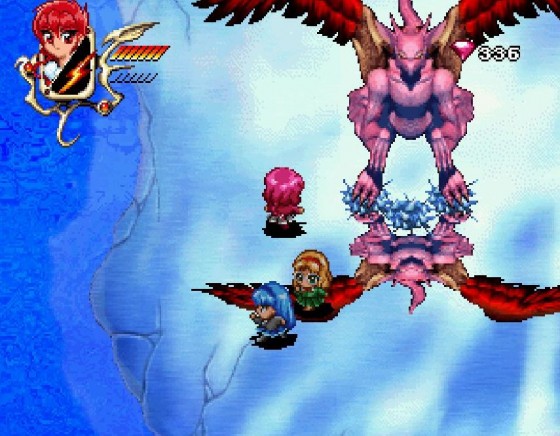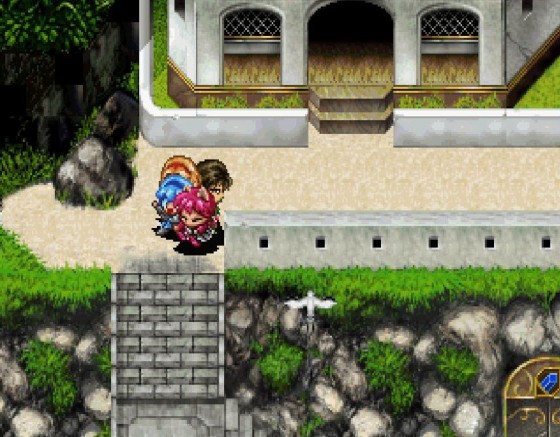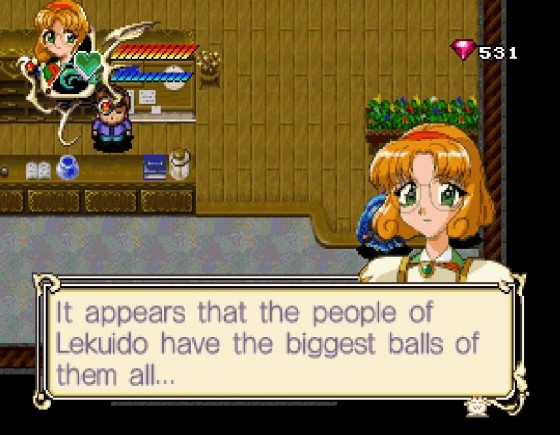Some of my greatest treasures in my collection are the games published by Working Designs. Their packaging was always astounding and they had very high standards when it came to the games they’d choose to localize. From the TurboGrafx-16 through the PlayStation 2, every game they release was a treat to look forward to.
For many longtime fans of Working Designs, a major sour moment was when they pulled their support for the Sega Saturn and cancelled several anticipated titles. Regardless, they did end up publishing a small handful games through the rest of the Saturn’s twilight years, including the final game released in North America: Magic Knight Rayearth.
Magic Knight Rayearth was developed by SEGA and came out in August of 1995 in Japan, but wasn’t released in North America until December of 1998. Part of the reason for the time gap was because of a number of technical issues with the game’s source code and legal issues involving the names of the main characters. From what I understand, there were already accepted English character names used in various localizations of the anime and manga but Working Designs wanted to use the Japanese names.
Magic Knight Rayearth follows the same basic storyline points of the first series of the anime and manga, but it takes substantial liberties. It doesn’t quite follow the source material. The game starts out at Tokyo Tower, where our main characters, Hikaru, Umi, and Fuu, are attending a field trip. They all meet for the first time here, since they all attend different schools, and are instantly whisked away to the mysterious land of Cefiro.
Once our heroines realize they’re no longer in Tokyo, they are instantly greeted by High Priest Clef, Cefiro’s top magician, who explains that they were summoned by Princess Emeraude to save the land. Clef explains that Princess Emeraude’s been kidnaped by Zagat, no relation to the restaurant guide and directs the girls to seek out the legendary Machines so they can confront Zagat and save Cefiro.
That’s about where the similarities between the Saturn game and the other media end. While the overall outcome of the story is the same, most of the plot points in the game don’t mesh with what happens in the anime or manga, up to and including certain characters’ deaths. If you’re familiar with the series you’re going to recognize most of the secondary characters and antagonists. However, there are a number of supplementary NPCs, towns, and events that are unique to this version of the storyline.
Magic Knight Rayearth puts you in control of all three characters by allowing you to switch between the three girls on the fly. The other two will hang behind in formation and do nothing aside from look pretty. Each character has their own unique magic and weapons as well as their own individual HP and magic bars.
Unlike the anime and manga where all three girls had swords, they changed things up to make gameplay a bit more interesting. Hikaru still uses a sword, but Umi uses a fencing foil, and Fuu now uses a bow and arrow. As you progress you’ll learn more magic and your weapons get stronger and gain better range. However, not only does Fuu have the only long range weapon, she can also charge her bow for a homing attack. Even though Hikaru and Umi’s attacks are stronger, they don’t get a lot of range until later in the game. Fuu is also the only one to learn a healing spell, compounding her usefulness.
I felt like the control was a bit floaty and not very precise. The hit detection on Hikaru and Umi’s attacks is incredibly picky, and the attacks feel stiff which doesn’t help the situation either. It gets better as their swords get stronger, but for the first chunk of the game it was very frustrating to use them especially considering how well Fuu’s attacks worked. I felt like the game gave me more trouble because of the control more so than difficulty. Once you get used to it, the game is fairly easy.
Running is also awkward. You walk in a direction until you pick up speed. About a third through the game you’ll learn how to dash so you no longer need a runway to use the “pulverizing bash”, which lets you break down some barriers in your way. I felt like it wasn’t necessary to make dash and the “pulverizing bash” two separate things. There are about two areas where you need to break something with the bash before you need to learn the dash. You learn them almost an hour apart from each other as well. Think of it like if in The Legend of Zelda: A Link to the Past, you had to use two different things when running and crashing through a wall instead of just using the Pegasus Boots.
While Magic Knight Rayearth didn’t raise the bar in terms of graphics, it did show off some of the Saturn’s 2D capabilities. Remember, even though it was the last Saturn game in the US, at its core it’s a game from 1995. The Saturn had made a lot of strides in that time. Even so, the environments are very lush and colorful and the sprites, particularly the boss sprites, are huge. All of the characters have that overly cute super-deformed look to them, which is often a sharp contrast from the character portraits which look more like the characters do in the anime and manga. It works well for the game, and for the characters in general as the other media would often break off into a chibi cut-away. There are some cutscenes, most of which were made specifically for the game.
If you’re a fan of the anime, you’re going to notice a good number of music tracks lifted straight from the show, including the opening song. While it’s not done exactly like the anime since it’s a MIDI rendition instead of CD-audio, the quality is very nice. The music doesn’t get too intense, but it fits with the theme of the game, which is a bit more lighthearted than the anime was.
Magic Knight Rayearth isn’t a very long game, roughly eight to ten hours, but there is a lot to do aside from the main plot. The game is laden with secret rainbow amulets which unlock items including access to outtakes. There’s also a number of hidden heart jewels and magic jewels that extend your HP and magic. There’s a hidden second version of the opening theme on the disc that was recorded. It’s also interesting to note that since the game took so long to localize, there were a number of changes made through the years. There’s actually a third version of the opening which was recorded first and showed up Working Designs website as promotional material. It had a different singer and their original logo for the game before they decided to use the same design as the localized manga and anime series.
Even though it may be a little flawed, Magic Knight Rayearth is still a decent game and it’s worth having in your collection, especially if you were lucky enough to pick it up when it first came out. Nowadays it’s highly sought after by collectors and fetches a hefty price tag. Working Designs did a fantastic job on the translation and it’s full of their classic voice actors that you’ll be familiar with if you’ve played their games. Their trademark humor is present, but this is a less serious take on the Magic Knight Rayearth story than in the anime and manga, and it really works. If you’re a fan of Working Designs and a diehard Saturn collector, it’s something you’re going to want. If you’re just looking for an action RPG experience on the Saturn you may want to consider getting the Japanese version instead since it goes for about $100 less than the North American version.
Replaying Magic Knight Rayearth was a great experience, but also a sad one. I adored this game when it came out, as I was a huge fan of not only Working Designs and the Saturn, but also CLAMP, the creators of the original Magic Knight Rayearth manga and Card Captor Sakura, X/1999, RG Veda and Chobits. It was a combination of two great things, but here was always that undertone of knowing that there wasn’t going to be another Saturn game. At least, not in North America. I think it’s a shame that this may never see a digital re-release or a current gen port. However, Capcom proved me wrong with Dungeons and Dragons Collection, hopefully someone can prove me wrong again.
Bought it? Sought it? Got annoyed that your copy didn’t have the character you wanted on the disc? I want to hear about it. Comment below or reach out to me on Facebook or Twitter.


